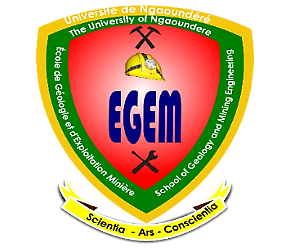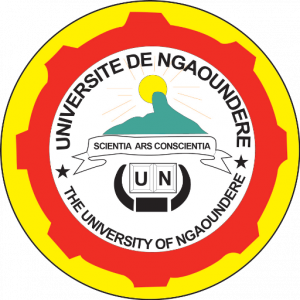DEPARTMENT OF GEOLOGICAL MAPPING AND GEOMATICS
- Presentation of the Department
The main mission of this department is that of teaching:
- Techniques of thematic map realisation;
- Remote sensing, ie knowledge of how to obtain satellite images, treat and detect mineral; indices using Remote sensing techniques. This can either be through optical Remote sensing, radar images or through the use of drones;
- Geographic Information systems (GIS) ie provide students with techniques of processing raster data in GIS sofwares to realise various thematic maps;
- GPS and Geodesy: ie teach the students on the theoretical and practical use of the GPS, various measurements effectuated in space and how this is related to the field of mining engineering;
- Data acquisition and processing through the use of the drone as the department has at its disposition two drones;
- Topographic and Geological maps: ie the students at the initial level have to learn how to read and interpret these two types of maps, realise topographic and geological profiles.
Since the creation of this department under the name Geological Mapping and Geomatics, there is actually one speciality, Geomatics applied to Exploration and Mining. There are four main options offered in the department: Digital Cartography, Remote sensing, Geographic Information Systems and Databases
It is left for the student to choose which of the options he or she better understands
- Infrastructure
This Department was created in 2015 but with neither equipment nor a teaching staff. The Head of Department was appointed in August 2017 where he had to define everything from scratch.
- As for the classrooms, students of the first cycle of the department follow classes with the rest of the students of the school. This is because all the courses are common courses. From level four, specific halls have been earmarked for levels four and five. Added to that, there is adequate space at the Head of Department office where practical classes can be held. Students do their practicals there and other classes
- As for the laboratory, the Geomatics laboratory is located close to other laboratories of the school and constitutes a number of equipment that enable students to carry out the practicals effectively. This laboratory is called Geomatics Research Unit
- As for the laboratory equipment, as of now we have five (5) manual stereoscopes, about fifty (50) aerial photographs, five (5) Topographic map sheets of Cameroon at scale 1/200 000 obtained from INC, two (2) detailed maps of Cameroon, (150) topographic maps of scale 1/50 000, 300 to 400 geological maps of scale 1/50 000, one (1) decametre, digital satellite images of Landsat, SPOT and ASTER, some digital topographic maps of different parts of Cameroon at scale 1/50 000, High resolution satellite images of some major cities in Cameroon, three (3) GPS, two drones of Phantome 4, one (1) compass, one (1) digital camera. It should be noted that some of these equipment are the personal property of the Head of Department who put them at the disposal of the students for effective training in the discipline.
- Pedagogy
Teaching in the Department of Geological Mapping and Geomatics is divided into two, classroom teaching ie theoretical and application classes with the use of the computer and fieldwork. For the class work, all the students from level 4 are obliged to own a computer, thus the classes are characterised by theoretical teaching and computer application. For the fieldwork, all the students no matter the level are obliged to have the prescribed equipment as mining engineers, most importantly a GPS and a compass for those in my department.
- Access to the department: Entry to this department is by a competitive exam. Amongst the different fields prescribed during the organisation of the exam, Geomatics is one of them.
- Activities: the activities of the Department of Geological Mapping and Geomatics are divided into two, classroom teaching ie theoretical and application classes with the use of the computer and fieldwork. For the class work, all the students from level 4 are obliged to own a computer, thus the classes are characterised by theoretical teaching and computer application. For the fieldwork, all the students no matter the level are obliged to have the prescribed equipment as mining engineers, most importantly a GPS for those in my department.
- Organisation of the course outline: Just like any other engineering school, each semester has six courses to be taught, four are the fundamental courses with each having 6 credits, while the other two are transversal and complementary courses with each having 3 credits, making a total of 30 credits per semester.
- Job openings
A mining engineer with speciality Geomatics has a wide range of job opportunities at his disposal. These include a database manager in an enterprise, water adduction especially in the creation of boreholes, environmental impact assessor, mineral exploring enterprises, manager of consultancy, project designer, project manager, cartographer, GIS expert in projects, amongst others.
5- The department’s teaching staff

Pr. KAH ELVIS FANG
Associate Professor

Dr. AMAYA ADAMA ADAMA DAIROU
Lecturer

Dr. NDJOUNGUEP JUSCAR

